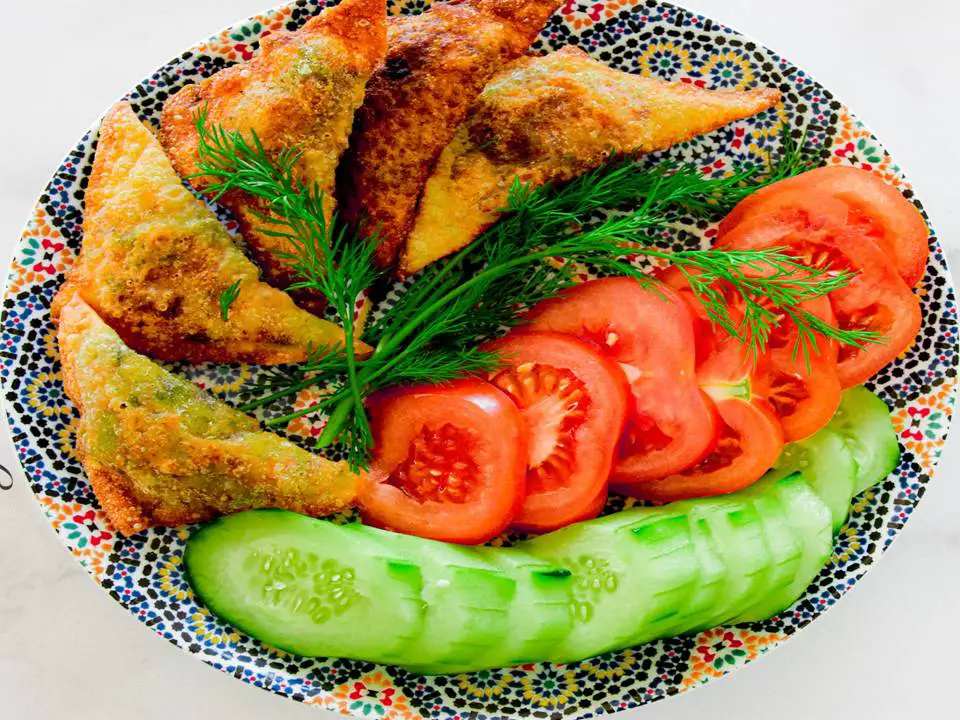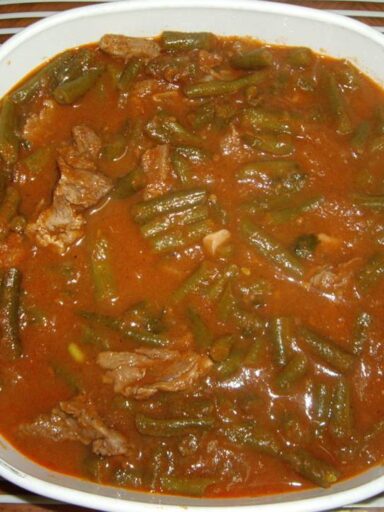Sambousek: Lebanon’s Beloved Meat Pies
Sambousek Lebanese dish, also known as sambousak, holds a special place in Lebanese cuisine. This flavourful meat pie appears frequently as an appetizer or part of a mezze platter. Sambousek Lebanese dish origins trace back to Middle Eastern cuisine, with variations found across Syria, Egypt, and beyond. Each culture adds its own unique twist, making sambousek a versatile and cherished dish.
A Flavourful Meat Filling
Traditional sambousek Lebanese dish features a half-moon-shaped pastry filled with a savoury meat mixture. Ground lamb or beef serves as the base, enhanced by a rich blend of Lebanese spices like cinnamon, allspice, and nutmeg. Onions, pine nuts, and a touch of pomegranate molasses add layers of sweetness and tanginess, perfectly balancing the deep, spiced flavours.
Soft, Chewy Dough
The dough provides a soft, slightly chewy contrast to the robust filling. Made from flour, water, salt, and yeast, it is kneaded until smooth and left to rise. Once ready, the dough is rolled out, cut into circles, and filled with the seasoned meat mixture. Each piece is then folded into a crescent shape and sealed by pinching the edges to lock in the flavourful juices.

Baked or Fried to Perfection
Sambousek offers two equally delicious preparations. Baking results in a light, golden-brown crust with a subtle crispness, while frying creates a flaky, crispy exterior for a more indulgent experience. Both versions pair wonderfully with yogurt or a fresh salad, balancing the richness of the meat.
More Than Just a Dish
Sambousek represents more than just a delicious snack—it embodies Lebanese hospitality and tradition. Whether served at gatherings or enjoyed as a simple treat, each bite offers a taste of Lebanon’s rich culinary heritage, bringing people together through shared flavours and traditions.
Sambousek Meat Pies Recipe
Ingredients:
For the Dough:
3 cups all-purpose flour
1 teaspoon salt
1 tablespoon sugar
1 tablespoon instant yeast
1/4 cup vegetable oil or melted butter
1 cup warm water (adjust as needed)
For the Filling:
1 lb (450g) ground lamb or beef
1 medium onion, finely chopped
1/4 cup pine nuts (optional)
1 tablespoon vegetable oil
1 teaspoon ground allspice
1/2 teaspoon ground cinnamon
1/4 teaspoon ground nutmeg
Salt and pepper to taste
1 tablespoon pomegranate molasses (optional)
Fresh parsley, chopped (optional)
Instructions:
Prepare the Dough
To begin, take a large mixing bowl and add the dry ingredients: flour, salt, sugar, and instant yeast. Stir well to ensure they are evenly distributed. Next, pour in the vegetable oil or melted butter and mix thoroughly until the mixture has a crumbly texture.
Once combined, gradually add the warm water while continuously mixing. Keep stirring until a soft dough starts to form. The dough should feel smooth yet slightly sticky. If necessary, adjust with a little more water or flour to achieve the right consistency.
Now, transfer the dough onto a lightly floured surface. Knead it for about 5 to 7 minutes until it becomes elastic and smooth. This step helps develop the gluten, giving the dough its structure. Once kneaded, place the dough into a lightly greased bowl. Cover it with a clean kitchen towel or plastic wrap and set it aside in a warm place. Let it rise for approximately one hour, or until it doubles in size.
Prepare the Filling
While the dough is rising, you can start making the delicious filling. First, heat the vegetable oil in a large skillet over medium heat. Once the oil is hot, add the chopped onions and sauté them until they become soft and translucent. Stir occasionally to prevent burning.
Next, add the ground meat to the skillet. Break it up with a spoon as it cooks to ensure even browning. Continue cooking until the meat is fully browned and no longer pink. At this stage, stir in the pine nuts, along with the allspice, cinnamon, nutmeg, salt, and pepper. Mix everything well to distribute the spices evenly. Let the mixture cook for another five minutes, allowing the flavours to blend beautifully.
For extra depth of flavour, you can add pomegranate molasses and chopped parsley at this point. Stir well to incorporate these ingredients into the filling. Once done, remove the skillet from the heat and let the filling cool slightly before assembling the sambousek.
Assemble the Sambousek
Now that the dough has risen and the filling is ready, it’s time to assemble the sambousek. Start by gently punching down the dough to release any air bubbles. Then, divide it into small, equal-sized balls, each about the size of a golf ball.
Lightly flour a clean surface and roll each dough ball into a thin, round circle. Try to keep the thickness even so that the sambousek bakes or fries uniformly. Next, place a generous tablespoon of the prepared meat filling in the centre of each circle.
To shape the sambousek, carefully fold the dough over the filling to form a half-moon shape. Then, press the edges firmly together to seal. You can also crimp the edges with a fork for an extra decorative touch and to ensure the filling stays inside while cooking.
Cook the Sambousek
Before cooking, decide whether you want to bake or fry the sambousek.
For Baking: Preheat the oven to 350°F (175°C) and line a baking sheet with parchment paper. Arrange the sambousek on the sheet, ensuring they are not touching. To achieve a golden, crispy finish, lightly brush the tops with a little oil or a beaten egg. Bake for about 20 to 25 minutes, or until they turn golden brown.
For Frying: Heat oil in a deep fryer or a large pot over medium heat. Once the oil reaches the right temperature (about 350°F or 175°C), carefully drop the sambousek into the hot oil. Fry them in batches, making sure not to overcrowd the pot. Turn them occasionally to ensure even browning. Fry for about 3 to 4 minutes, or until they become golden and crispy. Once done, transfer them to a plate lined with paper towels to drain any excess oil.
Serve and Enjoy
Once cooked, serve the sambousek warm for the best flavour and texture. These delightful pastries pair wonderfully with yogurt, a fresh salad, or as part of a mezze spread. Enjoy your homemade Lebanese sambousek with family and friends!




